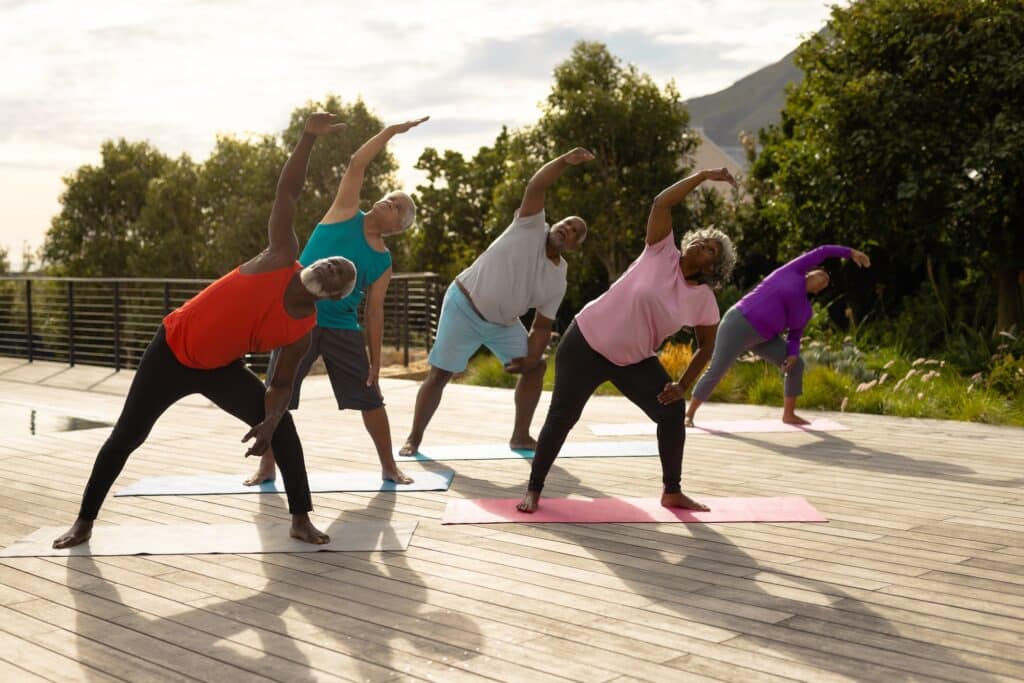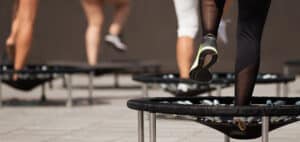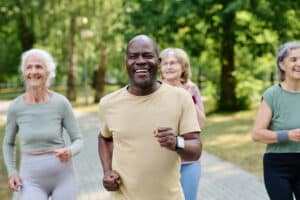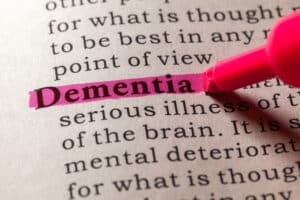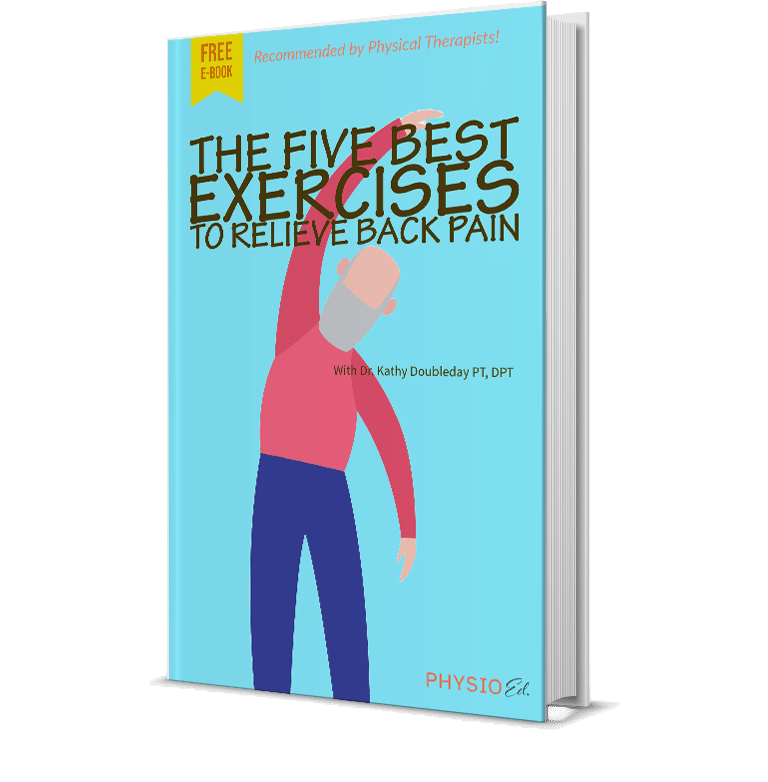Exercise benefits people of all ages, but it is essential for seniors to stay active. As we age, our bodies become less resilient and are more susceptible to health problems. Fortunately, regular exercise can help offset the effects of aging by providing a wide range of benefits.
The evidence is clear: regular exercise can help improve physical health, mental well-being, and overall quality of life for seniors. So, let’s examine how exercising can benefit seniors, the best exercise for older adults, and how to get started.
Why Older People Should Exercise
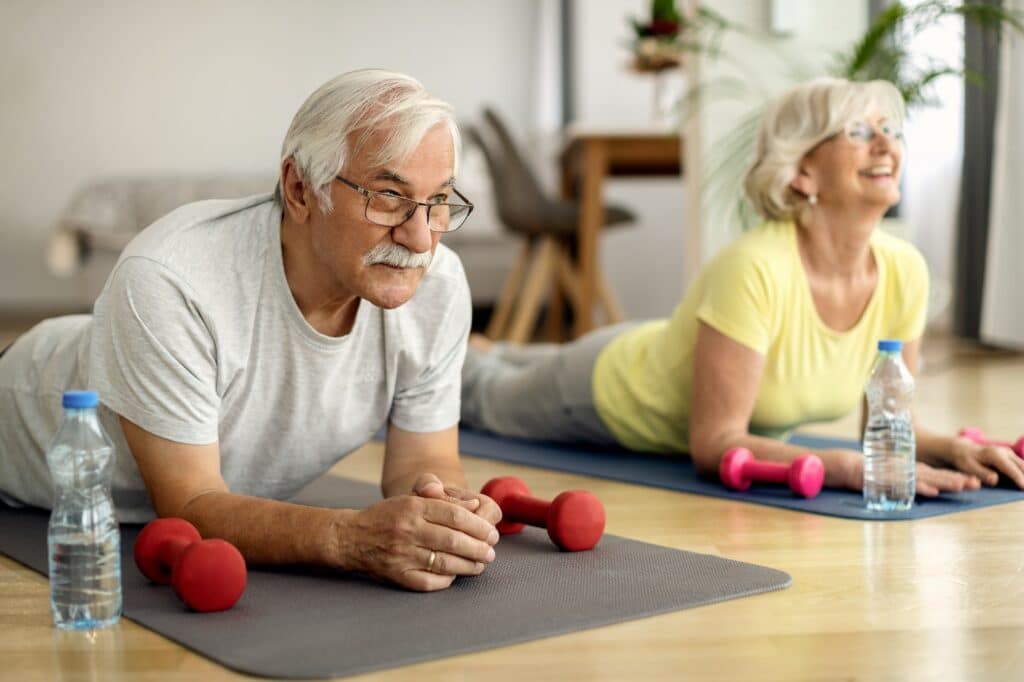
Exercise is one of the most powerful habits for people of all ages, playing a role in managing countless health problems.
As we age, our priorities with exercise will change. This means that while your fitness goals earlier in life may have revolved around a specific mile time or weight lifting record, now they’re more likely to focus on the particular needs of your health and wellness.
Like kids and younger adults, seniors should stay active to maintain their physical and mental health, improve mobility, and maximize their quality of life.
Exercise is an incredibly potent medicine which:
- Strengthens bones and muscles
- Improves balance and reduces the risk of falls
- Boosts heart health
- Helps manage chronic conditions like diabetes and arthritis
- Increases energy levels and contributes to better sleep patterns and mood
- Enhances cognitive function
While there is no exact formula for the best exercise for older people, there are many great benefits to discuss and options to achieve each. In short, physical activity is essential for seniors to stay healthy and maintain their independence as they age.
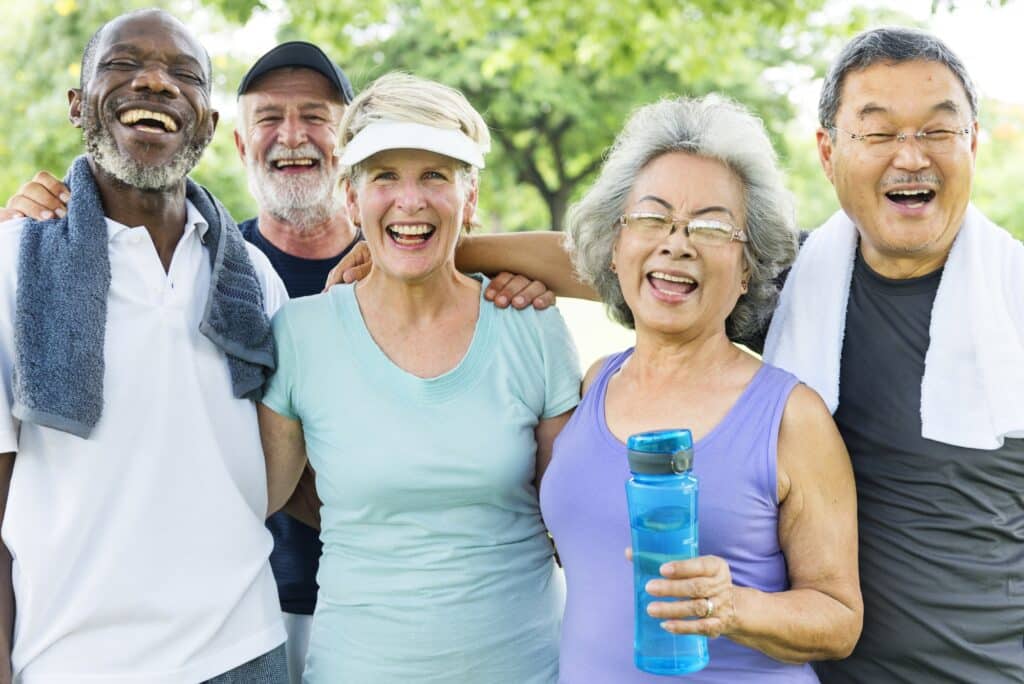
The benefits of exercise become especially important to offset a natural decline in several areas of our health as we age.
Generally speaking, these benefits can be separated into physical and psychological categories, but remember that both are connected!
The Physical Benefits of Exercise for Older People
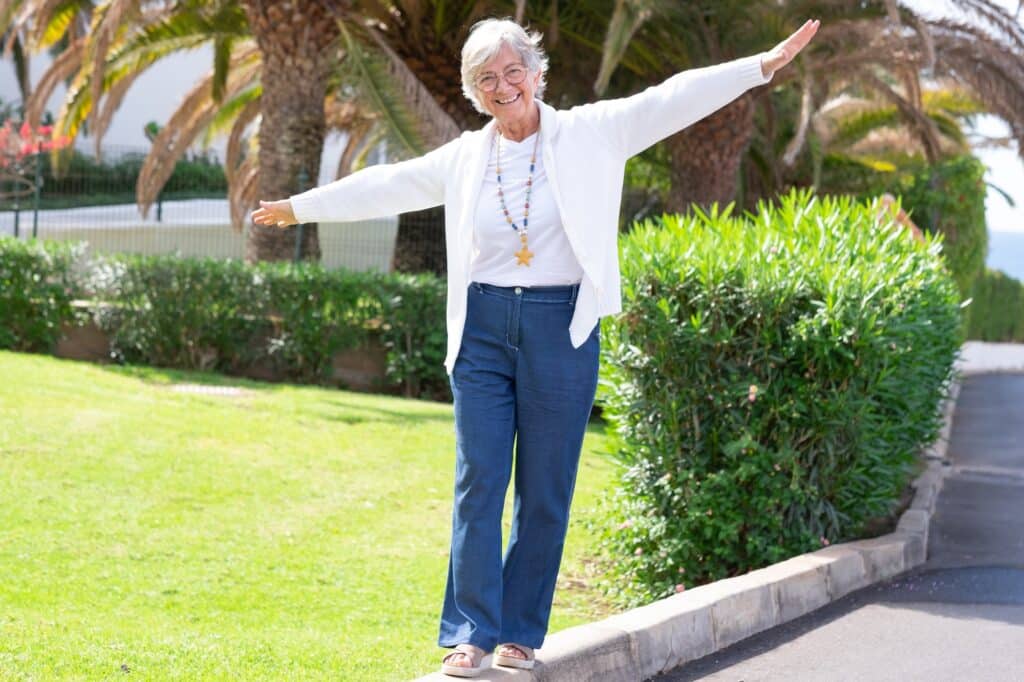
Disease Prevention
Regular exercise is among the most potent tools for general disease prevention for older people.
Numerous studies have found that regular physical activity that increases your heart rate (aerobic activity) and stresses your muscles can reduce the risk of developing chronic diseases like heart disease, stroke, and type 2 diabetes, all of which are responsible for serious health complications.
Exercise can also help manage conditions such as high blood pressure, arthritis, and obesity. Physical activity helps keep arteries healthy by reducing plaque buildup, maintaining healthy cholesterol levels, and improving blood flow to your body’s tissues.
It also helps strengthen bones and muscles, improving resistance to several stress-related injuries. This is especially important for seniors with weakened muscles and joints due to advanced age, deconditioning, or previous injuries.
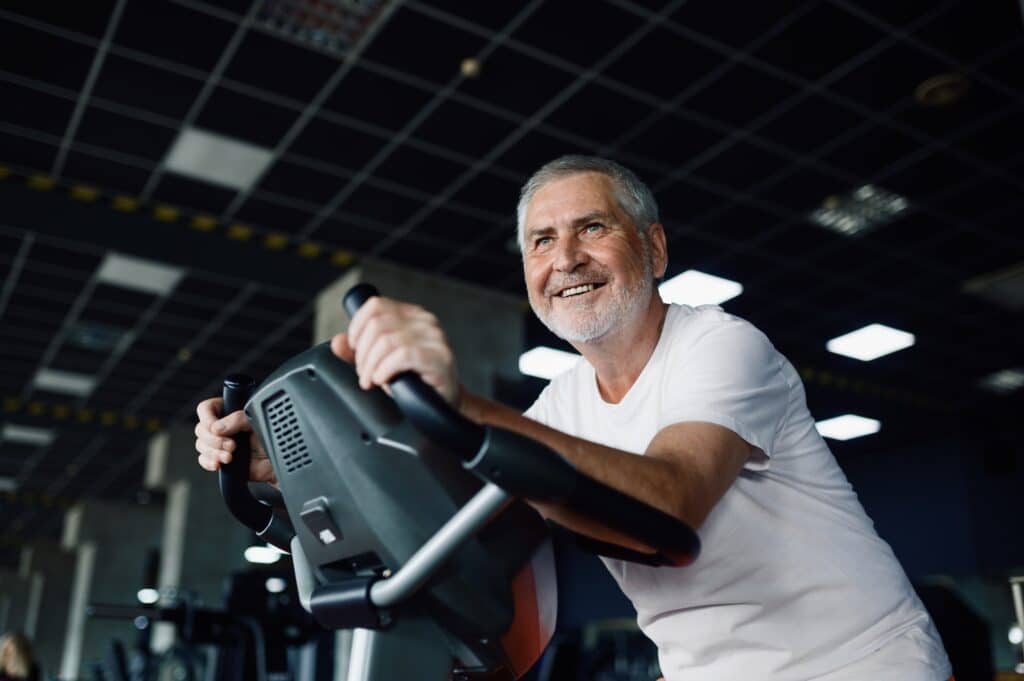
Bone Loss Prevention
The benefits of exercise for bone loss prevention are significant.
Physical activity helps to strengthen bones and reduce the risk of fractures due to falls or other causes. Weight-bearing exercises such as walking, running, and resistance training help minimize bone loss naturally occurring with age.
Regular physical activity helps to promote increased calcium absorption in bones, which reduces the risk of osteoporosis and other conditions related to bone density.
Furthermore, exercise can help you maintain a healthy weight which is vital for preserving bone health. In some cases, you may benefit from exercise equipment designed to stimulate increased bone density for if you’re at high risk for osteoporosis.
Ultimately, exercise is the key to preventing bone loss and minimizing the severity of related injuries that might occur.
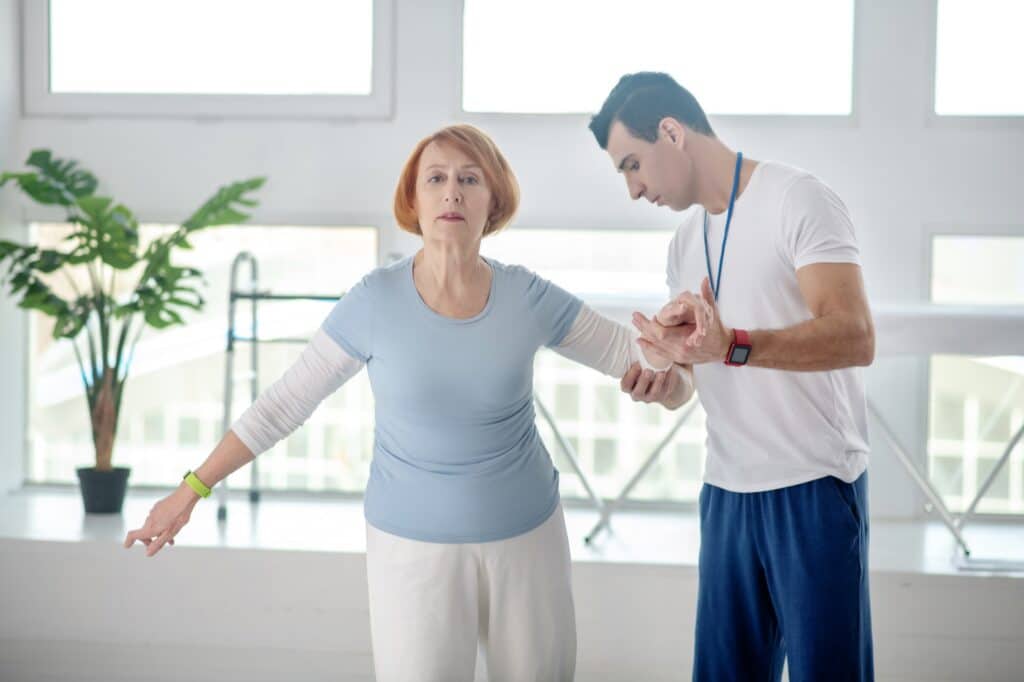
Fall Prevention
Regular balance exercise can help reduce the risk of falling by improving balance, coordination, agility, and strength. This is especially important for seniors, who often find themselves at an increased risk of falls due to normal age-related physical decline.
By engaging in regular physical activity such as walking, exercise classes, or structured balance programs, you can improve your body mechanics and increase your ability to recover from an unexpected loss of balance.
Targeted balance and core exercise help maintain balance throughout the years so that falls and slips become far less likely.
Furthermore, regular exercise can increase blood flow and lubrication throughout the joints of the body, which helps to reduce fatigue and make movements smoother—both of which are important for reducing your risk of falls.
Ultimately, exercise is central to preventing falls in seniors and improving safety overall.
The Psychological Benefits of Exercise for Seniors
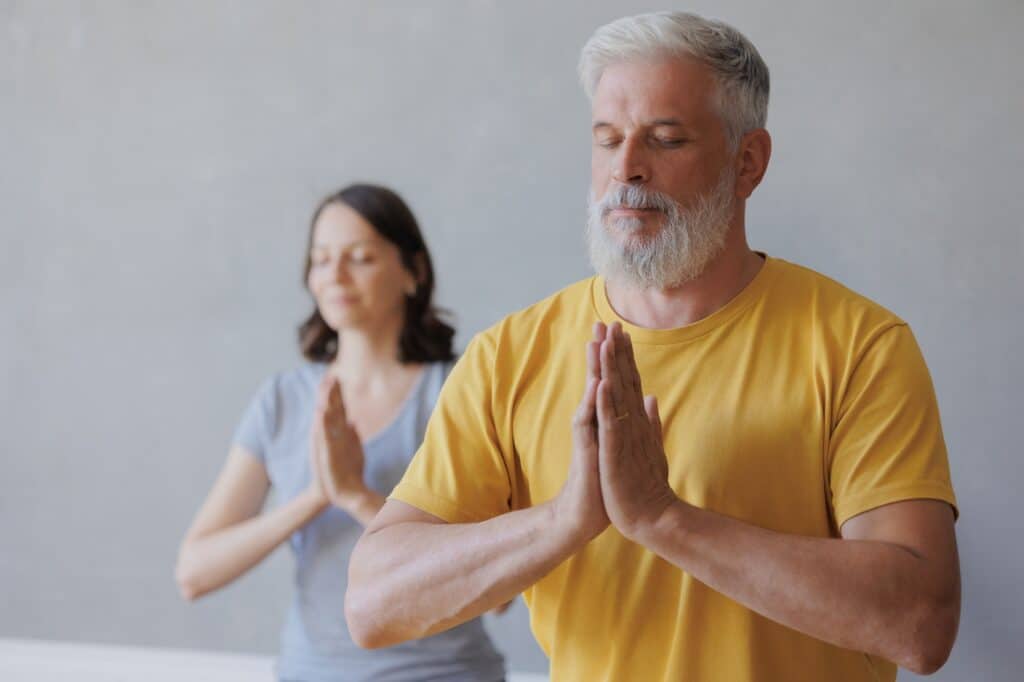
Mental Health
Regular physical activity can play a significant role in maintaining mental health as we age
In fact, exercise has been linked to improved mood, decreased stress and anxiety levels, and improved sleep quality for people of all ages.
Even better, regular exercise can even help to reduce the risk of developing mental health conditions such as depression and cognitive decline that is related to diseases like Alzheimer’s.
Many types of exercise—but especially those that increase your heart rate—boost the production of endorphins in your body, boosting an overall sense of happiness and well-being.
Endorphins can also play a role in pain management and, in some cases, work to reduce pain levels more effectively than pain medications. Additionally, exercise can help reduce cortisol levels, a hormone associated with stress and anxiety.
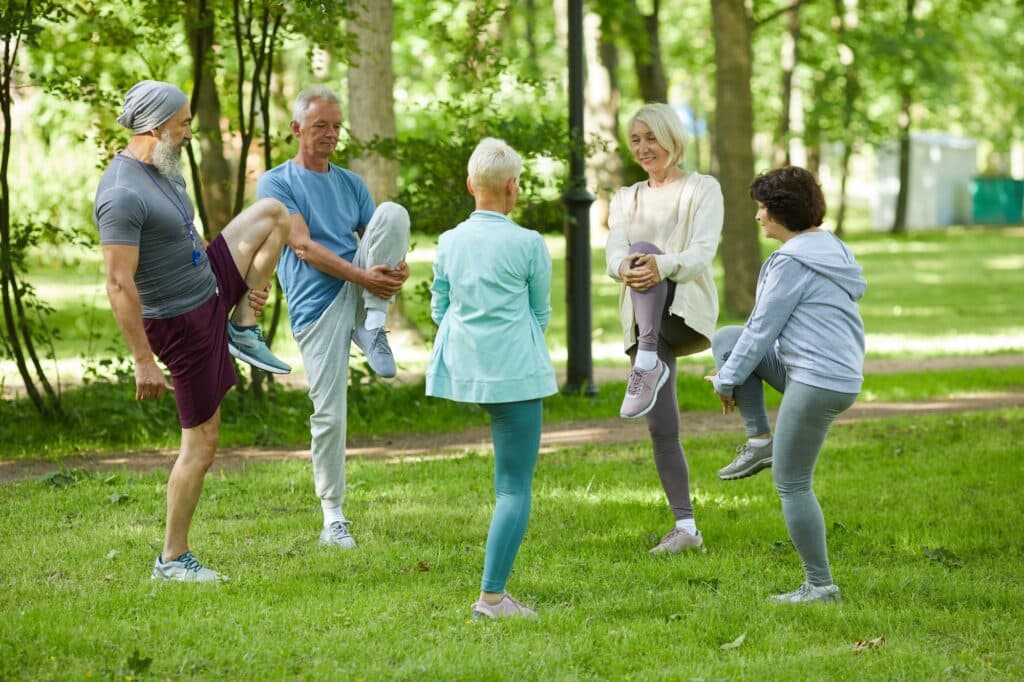
Socializing
While exercise can be a great solo activity for many, it’s also an excellent opportunity to have fun with people you know or to make new friends. Better yet, social exercise increases participation and accountability to help you stick to your exercise program more easily.
As we age, community social opportunities may arise less frequently. Group exercise can be a great opportunity to maintain a healthy social life.
Joining an exercise class or striking up a conversation at your local gym might feel intimidating. Fortunately, new technology is making remote exercise more social than ever.
In fact, digital and remote forms of exercise are preferred by many older people to interact and socialize with others over traditional means. In many cases, it can be done from the comfort of your own home.
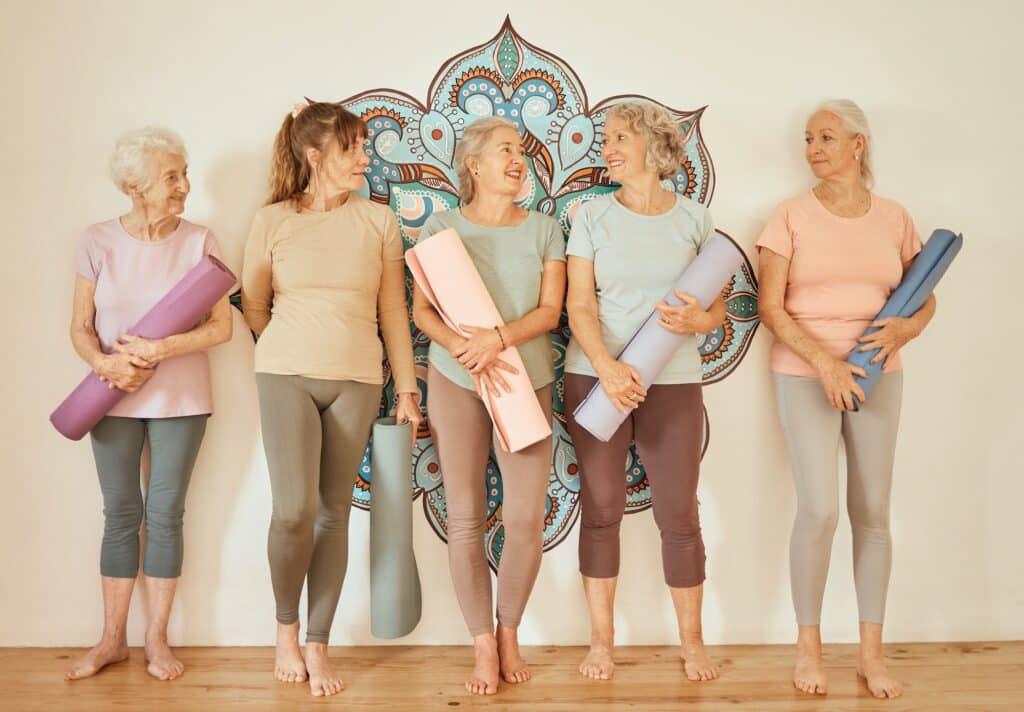
Cognitive Function
Many seniors will say exercise is essential to maintaining their cognitive function. However, several studies have found regular physical activity to help improve overall memory and attention while reducing the risk of developing dementia and other age-related cognitive conditions.
Additionally, regular exercise is known to increase levels of specialized proteins in the brain that are responsible for helping to form new neurons (brain cells) and strengthening connections in the brain.
Exercise can also help to improve coordination, reaction time, and the ability to think quickly, all of which are important for staying sharp throughout the years.
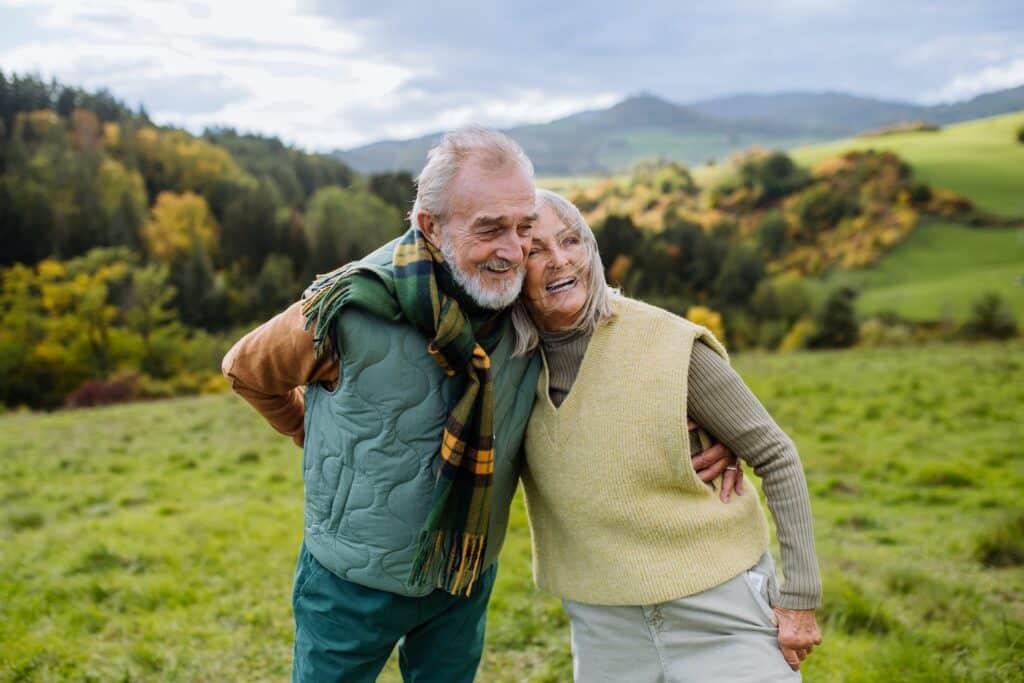
Quality of Life
While our overall quality of life isn’t something we often think about, it’s actually the culmination of all the other benefits of exercise that many older adults work so hard for.
Although assigning a number to something as impactful as your quality of life can be challenging, it should represent other parts of your physical and psychological health that you notice in your everyday life.
Many tests and surveys can help us rate our quality of life, but many people will tell you that it’s something you “just feel” rather than rate.
Exercise of all kinds has been associated with an improved quality of life, which is an excellent reminder that simply staying active can dramatically affect our well-being.
Exercise Programs for Seniors
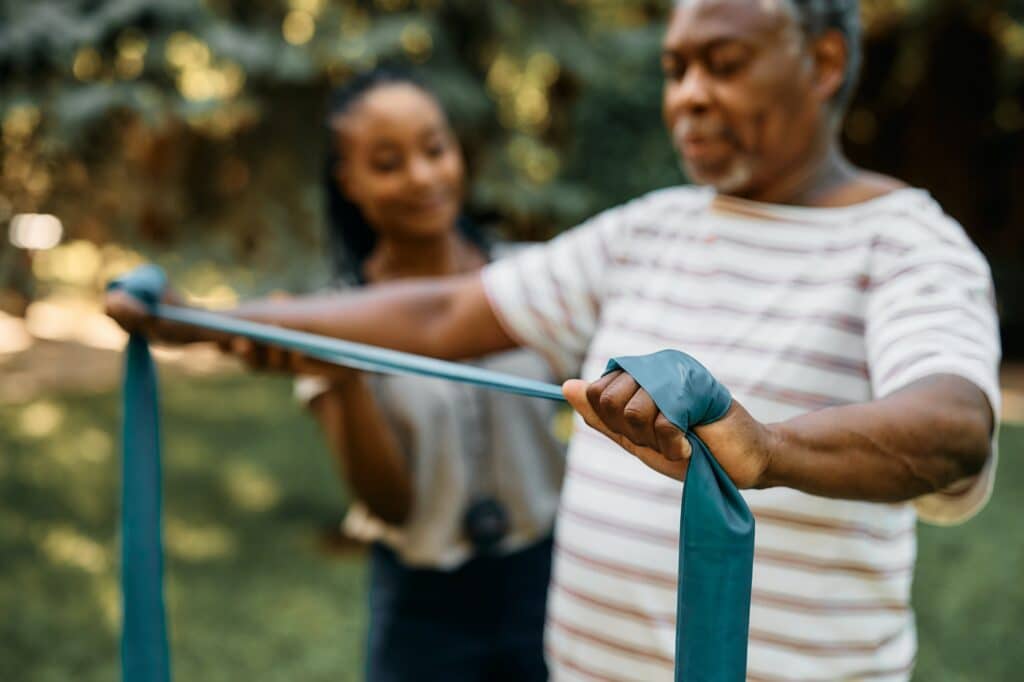
Finding the right exercise program—and the time to exercise can take some work. Luckily, many fabulous exercise programs are available for older people. Getting and staying active has never been easier!
Senior Exercise Classes
Senior exercise classes are safe and effective forms of group fitness designed specifically for older adults.
Activities will typically focus on increasing flexibility, muscle strength, balance, and the endurance of your heart and lungs. Sometimes, your class may use a fitness tracker such as a heart rate monitor to measure your activity level.
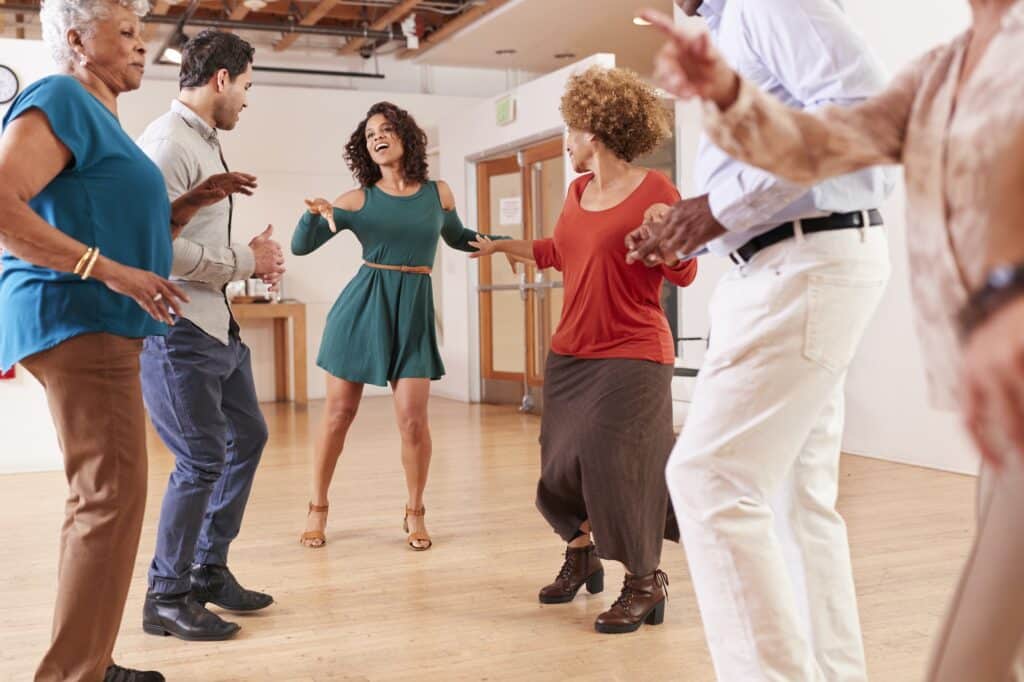
Examples of senior exercise classes include yoga, tai chi, water aerobics, Pilates, strength training, dance classes like Zumba or ballroom dancing, and walking groups.
These activities can help improve overall physical health and well-being while providing a powerful sense of community interaction.
Gyms for Seniors (55+)
In many areas, senior-priented fitness centers are designed to provide safe and effective workout opportunities for people over 55.
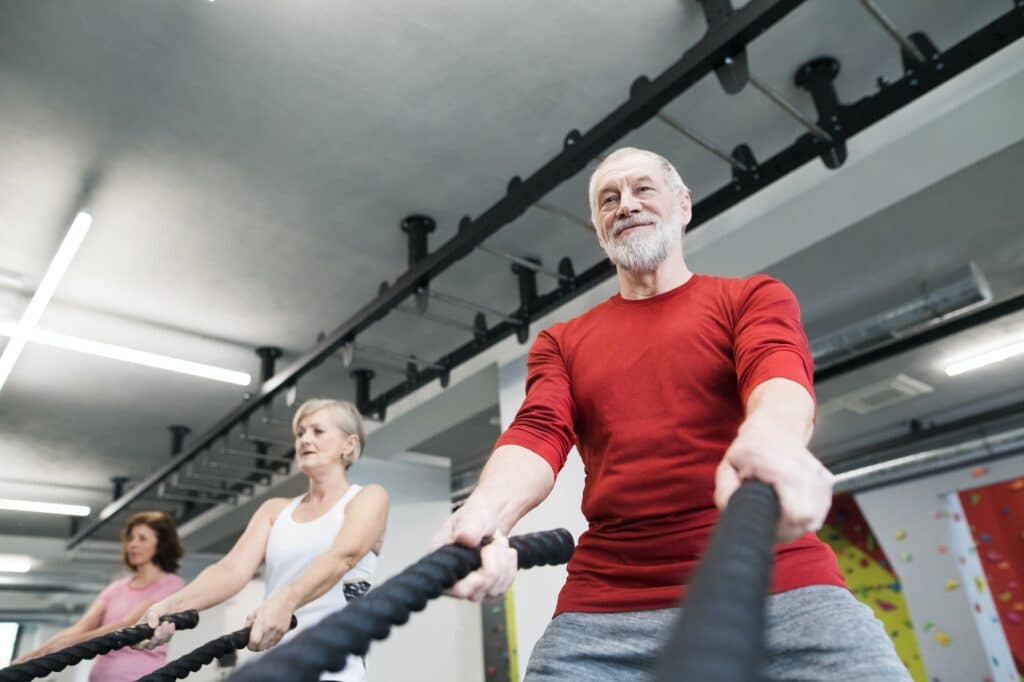
These gyms usually offer a variety of classes, exercise equipment, and resources tailored specifically to the needs of older people.
This can translate to equipment that is easier to use, specialized classes such as chair yoga or Silver Sneakers, and a higher staff-to-member ratio to help ensure exercise safety in the gym.
Senior gyms for are also an appealing option for those who want to socialize with community members from a similar age group.
Senior-Qualified Personal Trainers
In addition to group exercise classes tailored to seniors’ needs, many certified instructors and trainers can offer personalized advice or one-on-one guidance to ensure you’re getting the most out of your workout routine.
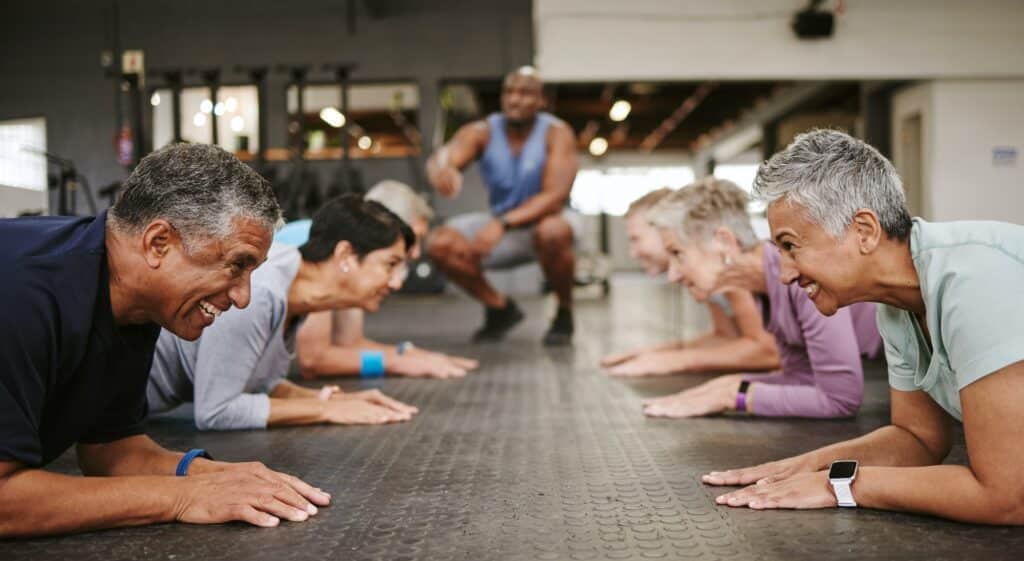
Your trainer may have specialized training in building an exercise program for older adults or be an older adult with decades of experience helping others exercise.
Finding a qualified personal trainer to work with seniors can be especially beneficial for those with age-related health complications or severe deconditioning.
However, one of the most significant benefits of a specialized trainer is having somebody familiar with your situation who can help motivate you to reach your fitness goals.
Guided Home Exercise Plans
In addition to in-person training options, several home programs and fitness apps are specifically designed for older people.
These options help provide personalized coaching and guidance to help keep seniors motivated and safe during their workout routines. Many people often prefer them over a traditional gym or group fitness class.
Guided home exercise options may include live video sessions, fitness trackers, coaching via messaging, intermittent in-person sessions with your coach or a combination of these to help older adults get the best results possible for their long-term health and wellness.
These options can benefit older adults struggling to find time to exercise.
Physical Therapy
Although distinct from other types of exercise for older adults, physical therapy can be essential to participating in physical activity and improving your general quality of life.
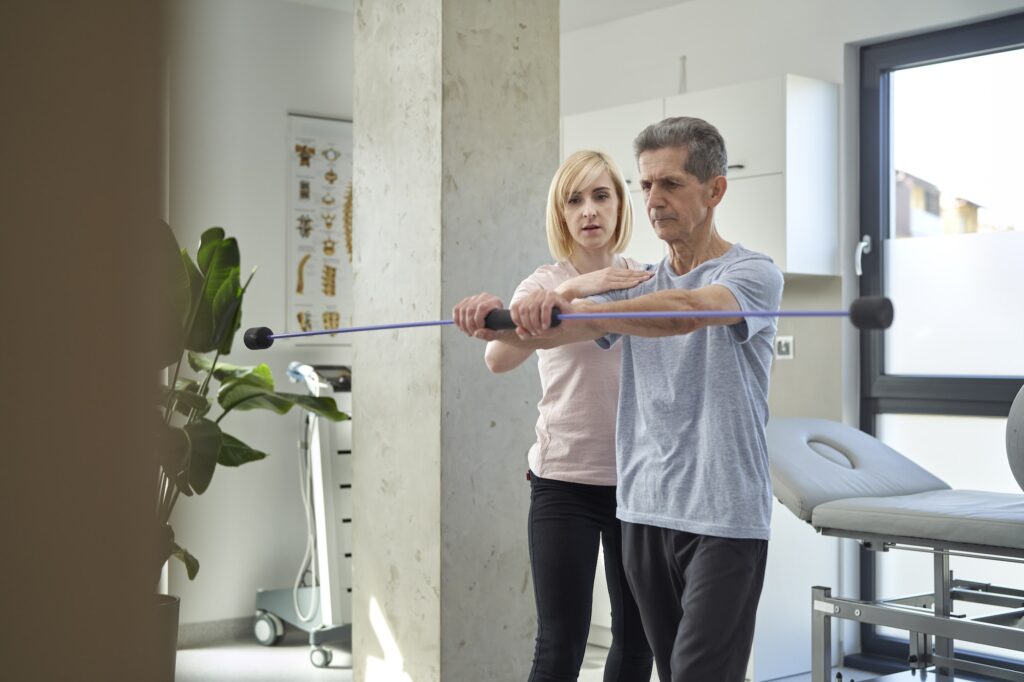
Physical therapy is especially effective for improving strength, flexibility, balance, and coordination and reducing the risk of falls and other aging-related injuries.
Your physical therapist will create a customized program tailored to your needs that emphasizes safe and effective exercise to build muscle, improve endurance, and get you back to doing what you love.
Physical therapy can also help older adults manage chronic conditions such as arthritis or other joint pain while improving overall mobility to help facilitate other forms of exercise. With physical therapy, older adults can get the help they need to stay active, healthy, and independent.
Key Takeaways
- Exercise helps manage chronic conditions, increases energy levels, and contributes to better sleep patterns and mood.
- Regular physical activity reduces the risk of chronic diseases, strengthens bones and muscles, and helps maintain a healthy weight.
- Regular exercise improves mood, reduces stress and anxiety levels, and can help prevent cognitive decline.
- Engaging in regular balance exercises can reduce the risk of falls by improving balance, coordination, agility, and strength.
- Exercise provides opportunities for social interaction, which can improve participation and accountability.
- Regular physical activity can improve memory and attention and reduce the risk of dementia.
- Regular exercise improves overall quality of life, affecting physical and psychological well-being.
- Many exercise options include senior exercise classes, senior gyms, personal trainers, home programs, fitness apps, and physical therapy.
FAQs
Why should I be physically active as a senior?
Engaging in physical activity as a senior is crucial for maintaining overall health and well-being. It helps strengthen muscles, improves balance and flexibility, reduces the risk of chronic diseases like heart disease and diabetes, and enhances mental health.
Regular exercise can also improve mobility and independence, making daily tasks easier and reducing the risk of falls. Additionally, staying active can positively impact mood and cognitive function, contributing to a better quality of life in later years.
How much physical activity do I need as an older adult?
The amount of physical activity required for older adults varies based on individual health and fitness levels. Generally, it is recommended that seniors aim for at least 150 minutes of moderate-intensity aerobic activity each week, such as brisk walking, swimming, or cycling.
Additionally, incorporating muscle-strengthening activities on two or more days a week can further enhance health benefits. It’s a good idea to consult a healthcare provider to tailor an exercise plan that suits your needs and limitations.
Is it safe for me to exercise as a senior?
Yes, it is generally safe for seniors to exercise, but it’s essential to do so carefully and within individual limits. It’s advisable to start slowly, especially if you’re new to exercising or have existing health conditions.
Consulting a healthcare provider before starting any new exercise regimen is essential to ensure the activities chosen are safe and appropriate. They can guide suitable exercises and advise on any precautions needed based on your health status.
Do I need to warm up before my workouts as a senior?
Warming up before workouts is vital at any age, including for seniors. A proper warm-up gradually revs up your cardiovascular system, increases blood flow to your muscles, and raises your body temperature, which can help reduce the risk of injury.
Warm-up exercises can include light aerobic activities like walking or slow cycling, followed by gentle stretching, focusing on major muscle groups. This preparation is crucial for making the body more flexible and prepared for the demands of your workout.
Should I lift weights for strength training as a senior?
Lifting weights for strength training can benefit seniors, as it helps maintain and build muscle mass, improves bone density, and enhances balance and coordination. However, it’s essential to start with light weights and gradually increase the intensity under professional guidance.
Always focus on proper form to prevent injuries. If lifting weights isn’t feasible, other resistance training forms, like resistance bands or body-weight exercises, can also be effective. Always consult with a healthcare provider before starting any new strength training regimen.
References:
- “How can strength training build healthier bodies as we age?” National Institute on Aging, 30 June 2022
- “Exercise and Older Adults Toolkit.” National Institute on Aging.
- “Exercise and physical activity.” National Institute on Aging.
- “The Life-Changing Benefits of Exercise After 60.” National Council on Aging, 30 Aug 2021.

